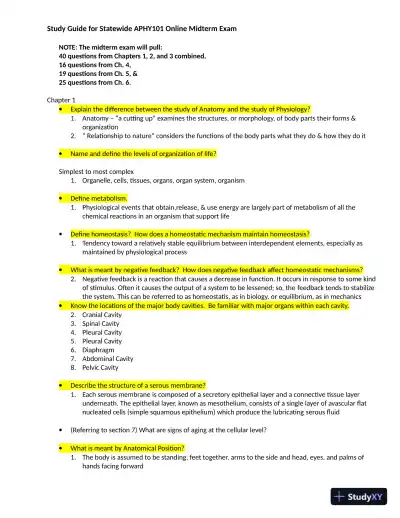Page 1

Loading page ...
Build confidence with APHY101 Anatomy and Physiology Study Guide Online Midterm Exam with Answers, filled with real exam questions that help you refine your test-taking strategy.

Loading page ...
This document has 12 pages. Sign in to access the full document!